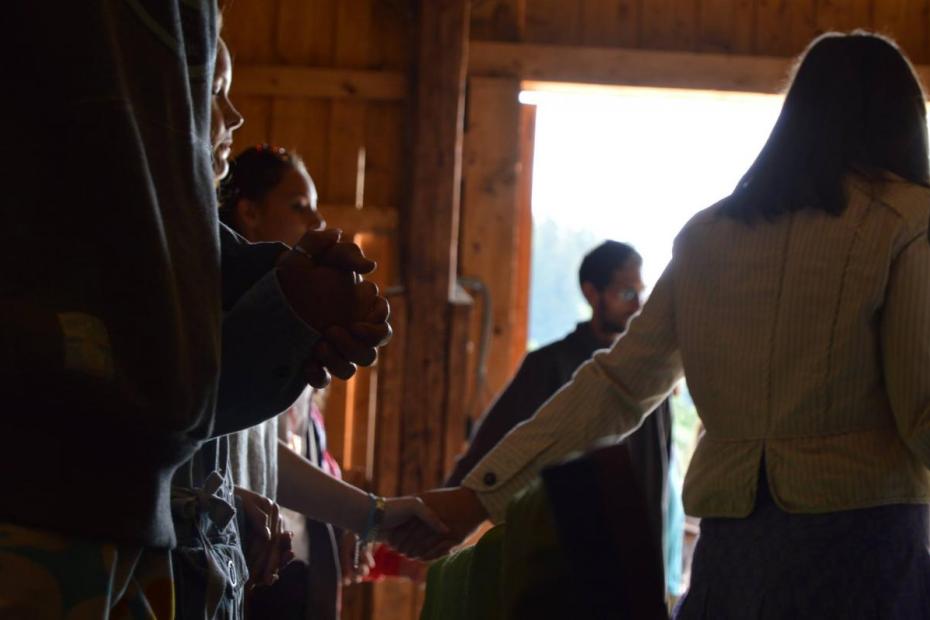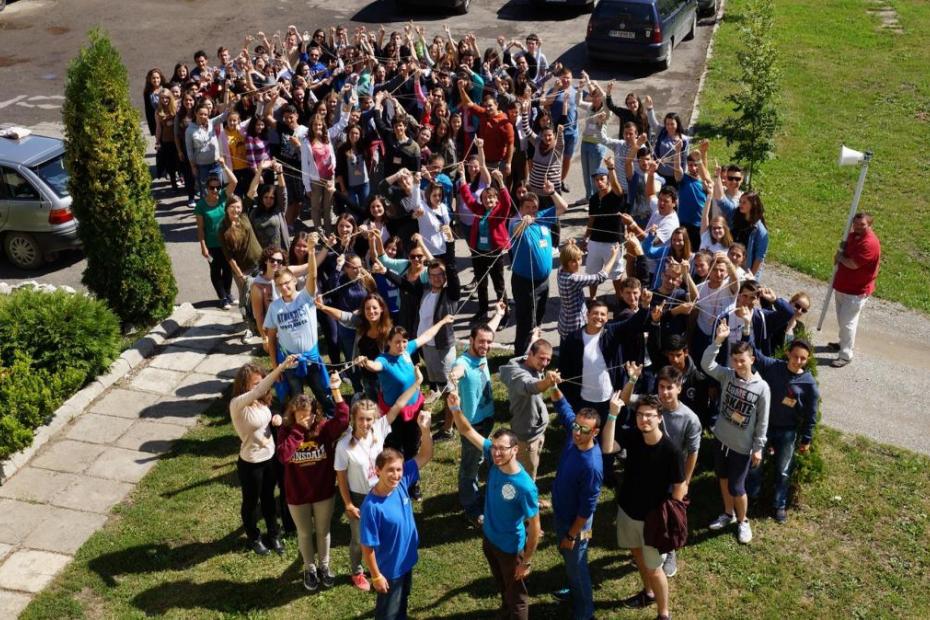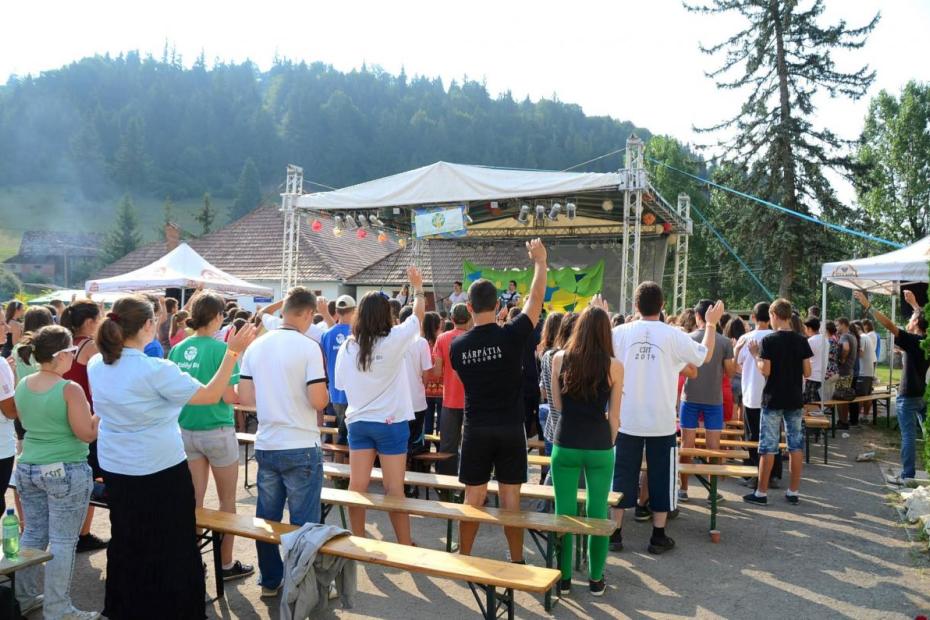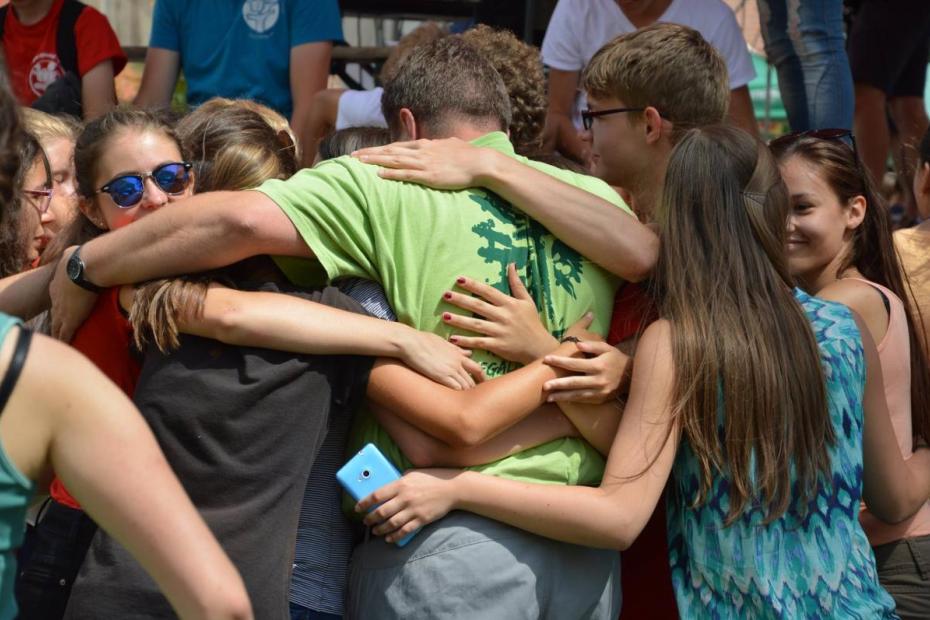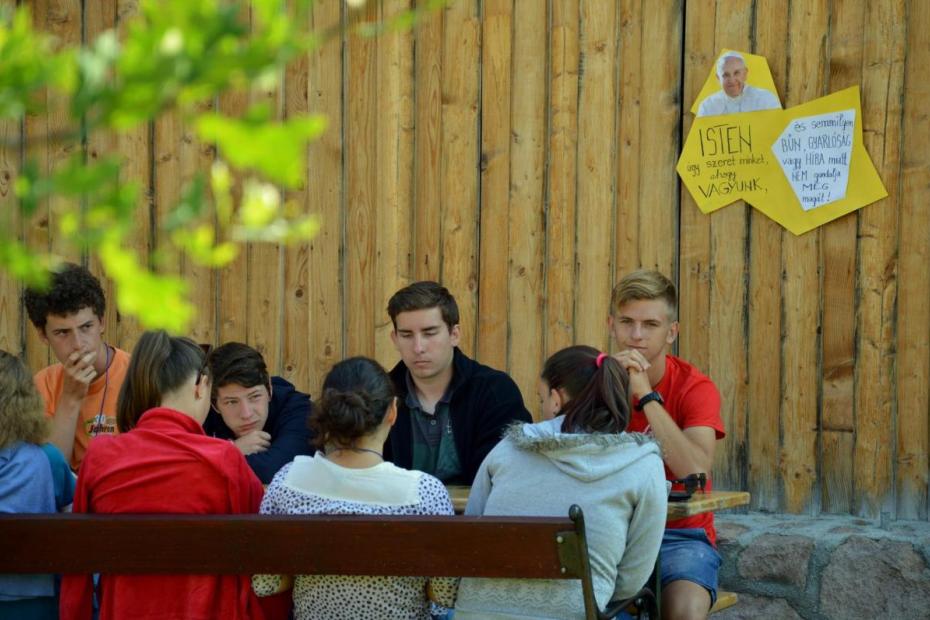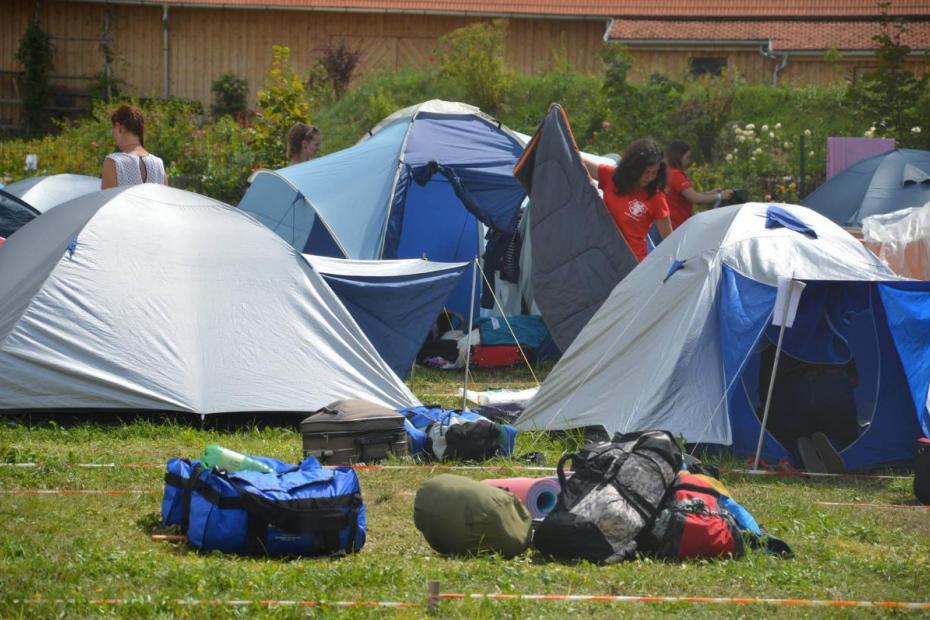The annual summer festival, the Csíksomlyó Youth Gathering (Csíksomlyói Ifjúsági Találkozó), begun in the early 1990s, attracts nearly 500 high school- and college-age people. It is held at the Csíksomlyó pilgrimage site and shrine, an outdoor area that becomes a camp site for the week of the festival. Young Catholics in Romania have plenty of other options for secular entertainment at major festivals. If you board any train or bus during the summer months in Romania, you are likely to see groups of high school- and college-age people with backpacks heading to a music festival or out on a camping trip. The Csíksomlyó Youth Gathering embraces what is fun about these activities: the concerts, educational workshops, and opportunities to meet new people. When you walk into the Csíksomlyó Youth Gathering, what is first striking is the casual atmosphere. Young people sit and chat in groups or stroll around waiting to stumble on something fun and interesting. Organizers close off a side street and set up a stage, and they put up a large tent for outdoor teaching sessions. Meals are eaten at large tables where young people from different areas of Romania have opportunities to meet each other.
Like at a European concert festival, music is a major attraction at the Csíksomlyó Youth Gathering. Well-known Charismatic Catholic performers “headline” the festival and make the event feel even more like a big concert festival. The young people in the crowd jump, dance, shout, and sing along to well-known Charismatic Catholic songs. The songs are a mix. Some are Hungarian translations of songs popular with Charismatic and Pentecostal Christians in North America, like “Mily nagy Istenünk.” Others are written by Transylvanian Charismatic Catholics, like “A kegyelem arad” (Grace pours down like rain). During the concerts, it is often difficult to distinguish between praying and cheering. During slow songs, young people hold their hands in the air and close their eyes intently to better focus on feeling the Holy Spirit. Others in the crowd sway and listen, like they are enjoying a more meditative number at a festival. The only difference is that many in the crowd weep powerfully and even sit on the ground, overcome with emotion.
A week-long summer camp attracts a smaller group of Charismatic Catholic young people for a more intense program of Charismatic worship and learning. The Charismatic movement’s chief organization — Keresztirány (Toward the Cross) — is relatively new. Organizers said that they are still trying to make their programming appear less strange and unusual to mainstream Catholics. Festivals celebrating traditional dance, music, and the arts are a staple of summertime culture in Transylvania. These festivals are a holdover from the socialist period when the government organized festivals during which local arts groups took the stage in front of larger-than-life posters of communist leaders and slogans celebrating the progress of socialist society. Charismatic Catholic organizers add opportunities for learning about revived traditional cultural arts in their summer camps. In the morning, young people will get warmed up for the day by doing calisthenics led by camp organizers. In the afternoon, they will attend a workshop to learn how to play a traditional baseball-type game called “méta.” Charismatic Catholics value “sharing” — the practice of telling stories about one’s personal experience of the Holy Spirit in small groups. Small circle discussion groups on a variety of topics are a staple of Charismatic summer camps and they offer plenty of opportunities for talking about what it feels like to be filled with the Holy Spirit.
Sadness is the emotion that is most easily and powerfully evoked during Charismatic worship services. Young people kneel down on the ground in between the pews and hold their head in their hands as they weep. Older organizers come prepared with paper handkerchiefs and they move around the group passing these out. These open displays of emotion and affection are an obvious counter-cultural aspect of the Charismatic movement in Romania. Walking around cities and towns, one will occasionally see men rest their heads against each other for a quick moment while shaking hands. Touching temples like this is a sign of affection for men. Women will hold hands or link arms with their friends. Charismatic Catholics say these ways of showing affection appear overly restrained, and they value intensity and spontaneity in their displays of emotiveness and intimacy. During prayer services, they kneel down beside each other, hold hands or lean their bodies against each other, while they shake with intense waves of sadness.
Older and more experienced organizers will speak in tongues, but only in small groups of friends or confidantes. Although Charismatic young people weep publicly, sometimes so strongly that they appear to lose control of their bodies, this does not lead to public acts of speaking in tongues. In interviews, Charismatic Catholics talk about speaking in tongues as a gift and a positive experience. They also mention that this practice is frowned upon not only by mainstream Catholics, but also by members of their own families. The parents of a young Charismatic Catholic man condemned this practice, saying that it was not appropriate for Catholics to speak in tongues. Their son, in contrast, had received baptism of the Holy Spirit and spoke about feeling relaxed and “spiritually refilled” after he spoke in tongues. He appeared to have kept this experience a secret from his parents.
Read more
Marc Roscoe Loustau, "Risking a Miracle: Transcendentally-Oriented Improvisation and Catholic Charismatics’ Involvement in a Transylvanian Canonization," The Journal of Contemporary Religion 31 (2016): 335-50.
